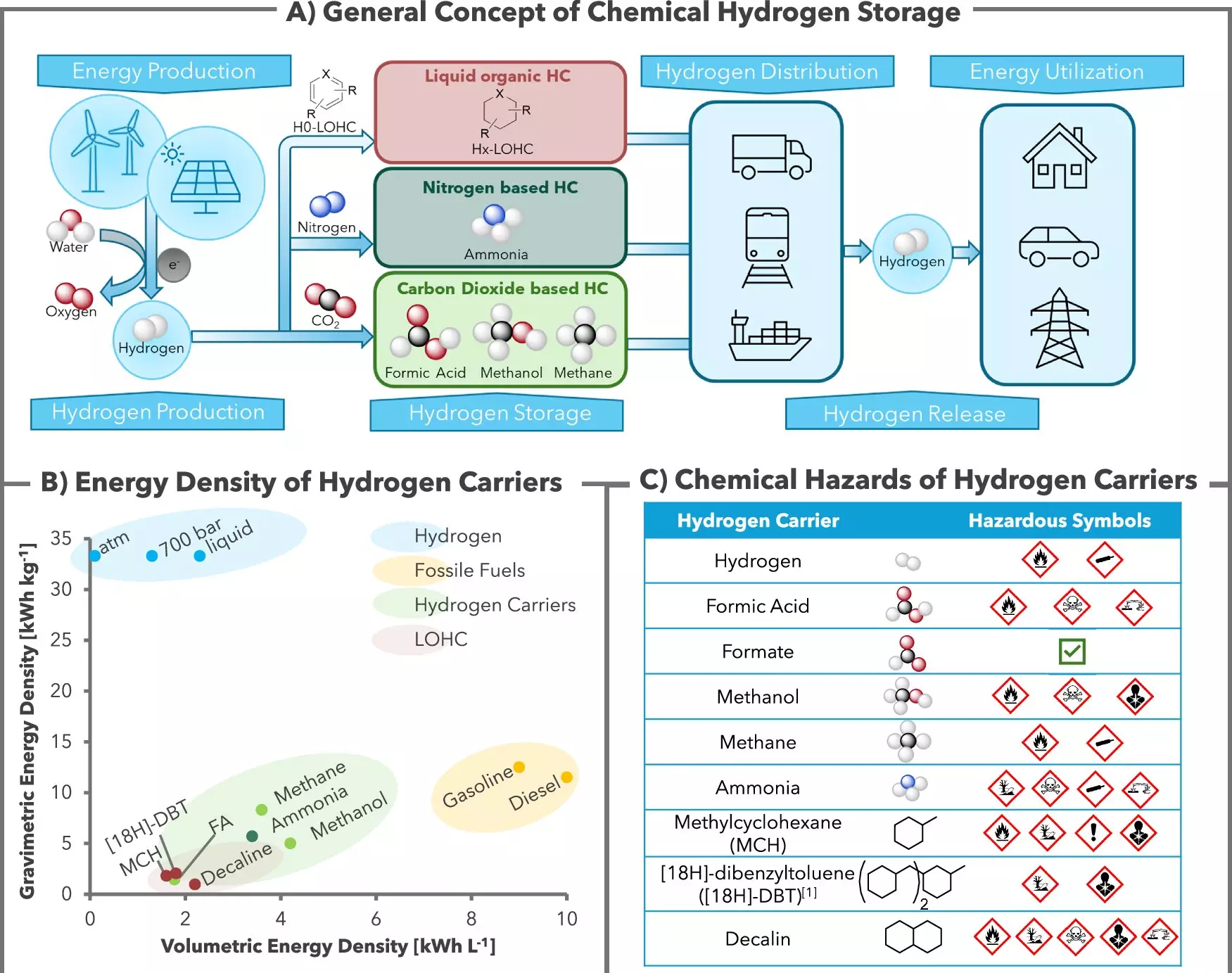As the world strives to transition towards a more sustainable energy future, hydrogen emerges as a pivotal player in the quest for renewable energy solutions. The volatile nature of hydrogen presents significant challenges in terms of storage and transport, prompting researchers to explore innovative ways to address these difficulties. A recent study from the Leibniz Institute for Catalysis (LIKAT) and H2APEX has shed light on new methods to safely and stably store hydrogen using simple, easily accessible materials. Their discovery has the potential to change the landscape of hydrogen storage, marking a significant step forward in energy technology.
At the heart of this breakthrough is a homogeneous catalyst system that allows for the chemical binding of hydrogen (H2) to potassium bicarbonate. This seemingly commonplace ingredient, often found in kitchens as baking soda, serves as a safe medium for hydrogen storage. When hydrogen interacts with bicarbonate in the presence of a ruthenium catalyst, it transforms into formate — a benign salt derived from formic acid. This reversible reaction provides a pathway to release stored hydrogen at will, highlighting a level of control reminiscent of traditional battery systems.
Dr. Rui Sang and Ph.D. student Carolin Stein, the principal authors of the study, expressed that this reversible nature of the reaction is integral to its functionality. “With this method, we can easily switch between storing and releasing hydrogen, using the same catalyst and system,” they stated, underscoring the practicality of their approach.
The research team demonstrated that their system operates efficiently at a stable temperature of approximately 60°C. Importantly, the reaction occurs within a solution that maintains all necessary chemical components, ensuring that the catalyst operates without being consumed in the reaction cycle. This self-sustaining mechanism contributes not only to cost-effectiveness but also to the environmental sustainability of the process.
According to Dr. Peter Sponholz from H2APEX, manipulating the pressure of hydrogen addition enables the reaction to either bind hydrogen to bicarbonate to produce formate or, conversely, to release hydrogen from the formate. This versatility provides a flexible approach tailored to diverse energy contexts, particularly in areas with ample renewable energy sources.
In the ongoing discourse about hydrogen storage solutions, other compounds like methanol, ammonia, and methane are often cited. However, the study emphasizes that formiate, as a storage medium, offers unique advantages in terms of toxicity and energy efficiency. Unlike conventional media, formate is non-toxic, suggests easier storage in plastic containers, and poses less risk during transportation — akin to methods already utilized for liquids like milk or diesel.
Henrik Junge, a leading researcher in the study, envisions formate’s potential to serve as a pivotal energy system for localized energy demands, especially in rural regions. By harnessing excess energy generated from wind or solar sources, green hydrogen could be produced through electrolysis and subsequently stored as formate, creating a sustainable cycle of energy availability that aligns well with community needs.
One of the most compelling aspects of this research is its promise of a CO2-neutral process. Traditional methods of hydrogen recovery often result in CO2 emissions due to the decomposition of bicarbonate. However, this new system ensures that CO2 is permanently retained within the process, leading to the production of high-purity hydrogen.
Over a test period of six months, the researchers reported an impressive capability of achieving 40 consecutive cycles of hydrogen storage and retrieval, producing hydrogen with a remarkable average purity of 99.5%. The minimal quantities of ruthenium catalyst utilized underscore the efficiency of the system, further validating its viability for real-world applications.
Encouraged by these promising results, H2APEX aims to scale up this technology, working towards the construction of a larger demonstrator model by the end of 2025. They are poised to transform laboratory findings into commercially viable applications, potentially revolutionizing how we think about hydrogen as a fuel source.
As the global energy landscape evolves, this innovative approach to hydrogen storage symbolizes hope. It encapsulates not only the promise of technological advancement but also the potential to mitigate the environmental challenges posed by traditional energy systems. The combination of safety, efficiency, and environmental consciousness positions this research as a cornerstone for a sustainable energy future, inspiring further exploration and innovation in the realm of renewable energy.

